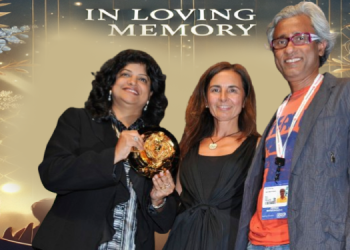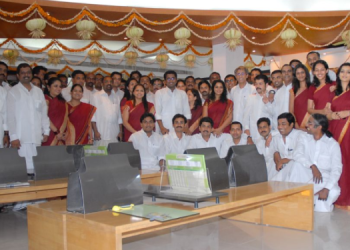The shifting role of the male – and father – in society is showing in pop culture and advertising. Heralded by campaigns like ‘The Complete Man’, he comes across as more humane, sensitive and certainly as an equal partner in life and parenting in recent years. Several brands have championed this shift.
But the occasion of Father’s Day seems to find fewer takers among brands when compared to Mother’s Day or Women’s Day. We asked advertising professionals and marketers: What explains this? Why is the third Sunday of June not earning the celebration the women-centric days do?

There is a disparity between Mother’s Day and Father’s Day celebrations, acknowledge some. Binaifer Dulani, Founding Member and Creative, Talented, is among them.
Dulani explains, “Mother’s Day is a significant moment in a brand calendar. We see more campaigns that further gender discourse, and use this topical moment to have long overdue conversations. But this is also because women, especially mothers, make 70 to 80 pc of consumer decisions – either directly or through the power of their veto and influence. This is across banking, real estate, automobiles, beauty, nutrition and more.”
She believes that while these factors elevate a mother’s position for any marketer, there’s an ethical responsibility for advertisers and marketers to correct the media portrayal of what a mother should look like. “For far too long we’ve propagated the image of a mom who does it all, all the time, and created a vicious cycle where new moms consider that unrealistic portrayal to be the norm,” she explains.
“As an industry, we’ve created no such baggage for dads. Having said that, to really double down on our intent to create equity for moms, we need to speak to the power centres in every household – the dad, and give him a new vocabulary to talk about his role and create new role models for him to look up to in a rapidly changing world. Looking forward to the brands that will grab this opportunity,” she adds.

Rohit Malkani, Joint NCD, Law & Kenneth Saatchi & Saatchi, cedes that there is a difference.
“Perhaps it has to do with the fact that Father’s Day was created 58 years after Mother’s Day was made official in the USA. So, Father’s Day is a bit of a late starter! The truth is ‘Father’s Day’ is still to be seen as a brand opportunity in India,” Malkani observes.
Giving Women Their Due

“The world and India too were dominated by men for long. I think society badly needed some correction by giving a platform, voice and there was a need to celebrate the other gender knowing the silent role women played in society, their contribution to family and in our lives, across the globe. Hence a genuine movement arose and we tried our best to correct the damage done in the past,” observes Santosh Padhi, Chief Creative Officer, Wieden+Kennedy India.
He adds that there should be no comparison between the two occasions and brands also need to celebrate Father’s Day with the same passion and emotions. Overall, he notes that more and more big and small brands are coming forward and doing ads which are beyond ‘just detergent, tooth paste, hair oil demos’.
“Our society has many issues. Brands who make money from the society (consumers), at some point should give back in some form or the other by standing for relevant societal causes which need to be addressed in a nation like ours,” opines Padhi.

While it may appear that Father’s Day receives less attention from brands compared to occasions like Mother’s Day, it wouldn’t be accurate to say that it is being neglected or being given step-motherly treatment, counters Varun Moolchandani, Executive Director, Archies.
“The perception of the treatment can vary depending on the industry, market trends, and cultural factors. Father’s Day has gained significant recognition and popularity over the years, and many brands do recognise and celebrate the occasion through their marketing efforts,” he says.
However, Moolchandani acknowledges that it is true that the scale and intensity of campaigns surrounding Father’s Day have been historically lower compared to Mother’s Day. He attributes it to various factors such as consumer spending patterns, cultural norms, and the historical prominence of Mother’s Day.
Reflecting the Fathers of Today

Abhijit Avasthi, Founder, Sideways, doesn’t believe that Father’s Day is being given a short shrift deliberately by brands.
“There are a fair number of brands which communicate equally to the audience on Mother’s, Father’s, and Women’s Day. One of the reasons why Women’s Day is given more importance is that every brand wants to project themselves to be progressive or modern and taking up a cause, which is required by the society – like women empowerment or furthering the needs of women. Hence it allies both ways, good message to communicate and helps in enhancing brand image,” adds Avasthi.

We are witnessing advertising with brands opting for newer narratives on the role of fathers, reflects Neha Singh, Group Business Head, Enormous Mumbai.
“For example, Nescafé’s #BadalLifeKiRaftaar and the latest Good Knight #NeendonKoNazarNaLage campaign. Obviously, that’s the reason Father’s Day narratives have gone up. Increasingly, brands are feeling the need to communicate and connect on Father’s Day, and we have seen a lot of work rolling out in the last few years for this day. Advertising is a reflection of society and movements in pop culture. In the same way, society is a reflection of advertising. There is a huge potential to push forward the new age father narrative and celebrate the contribution of fathers,” underlines Singh.
That said, mothers being the epitome of all relationships, celebrating them is an age-old mantra that has always worked for brands, she observes.
Singh adds, ”Women’s empowerment has a huge overbearing on popular culture today, and it’s been reflected in advertising. As an industry, we should push forward the shift from the breadwinner father to fathers who share the responsibility of baking the bread.”
Why Not Father’s Day?
According to Moolchandani, the higher number of campaigns for Mother’s Day and Women’s Day can be attributed to several factors, first being historical context and their evolution ahead of Father’s Day.
He elaborates, “Second factor is societal norms. There is a traditional perception that mothers and motherhood have a more significant role in nurturing and caregiving, which has been deeply ingrained in many cultures. This perception has led to a stronger emotional association with Mother’s Day, making it an attractive occasion for brands to tap into sentimental marketing and create impactful campaigns.”
He reasons consumer behaviour as a third factor: “Historically, there has been a higher tendency for consumers to spend more on gifts and experiences for Mother’s Day compared to Father’s Day. Brands may prioritise campaigns that align with consumer demand and preferences to ensure their marketing efforts are effective.”
However, he underlines that these trends are not fixed and that the landscape is continually evolving. “As societal dynamics change, we are witnessing a shift in the way Father’s Day is celebrated and the attention it receives from brands. More and more brands are recognising the importance of Father’s Day and are starting to create campaigns that cater specifically to fathers, acknowledging their role and contributions.”
Malkani cites examples like P&G Moms campaign for the Winter Games to Bournvita’s closer home, to underline that it’s a global phenomenon.
He explains, “Firstly, moms are seen as gatekeepers to homes. You win her over, you get entry inside the home. So when a brand pays tribute to her, half your job is done. She does a job, which in India at least, she gets the least appreciation for. Secondly, from a pure purchase decision point of view, most products are skewed towards women. With the exception of financial products (yet another unfortunate example of stereotyping) which are targeted at men.”

Anusheela Saha, ECD, FCB India, observes, “This behaviour stems from the fact that fathers are usually seen as the absent half of parents who don’t need to be put on a pedestal. And that’s why the tendency of brands to do more ads for Mother’s Day. After all moms are the one who slog it out the most – so emotionally drenched pieces of ads are ideal for them.”
But she too believes that the times are changing.
Shifting Sands?
“We have seen quite a few interesting ads for Father’s Day. Gillette and Tanishq have been quite consistent and even The Man Company did an interesting piece last year. So, we should watch this space/day for more,” notes Saha.

“Is it the physical connection formed through the umbilical cord that makes children closer towards their mothers, or is it the fact that mothers tend to more expressively voice their concerns, love, and fears for their children compared to fathers? Mothers demonstrate an innate understanding of what is best for their kids. While brands portray mothers as all-knowing, selfless figures who would sacrifice everything for their children (and rightly so), fathers are still praised for their efforts in ‘babysitting’ their own kids, without being considered fully capable of functioning independently. Ironically if you drop the m from ‘mother’, you are ‘other’,” observes Krishna Iyer, Director – Marketing, MullenLowe Lintas.
Iyer surmises, “Even if dads insist that they don’t need anything for Father’s Day or even dismiss it as a fabricated occasion, deep down, he truly desires the cake, the card, the affectionate hugs, and kisses, and all the attention in the world on this special day. So, brands, pamper him and he will cherish it, even if he puts up a show of indifference.”
(First published by The Free Press Journal BrandSutra. Content powered by MediaNews4u.com. Feedback: [email protected])

















